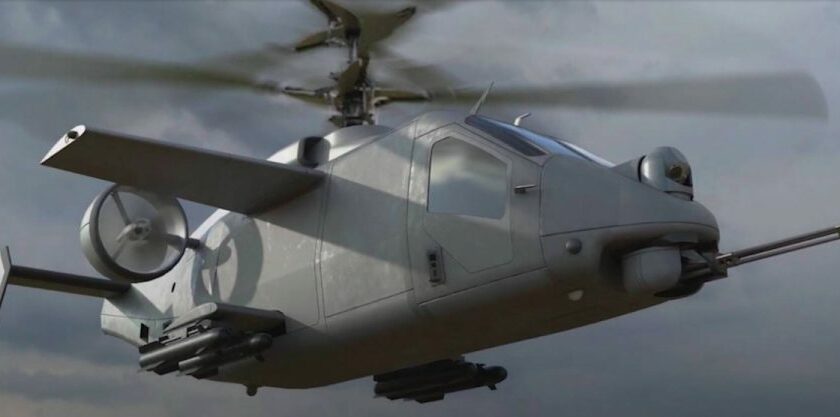While the Future Vertical Lift program, one of the pillars of the ongoing modernization of the US Army, was initially to focus solely on the replacement of the Black Hawk maneuvering helicopters, a program for which Bell with the V-280 Valor and Sikorsky with the SB-1 Defiant are in competition, the American military authorities decided, a year ago, to accelerate it by integrating, from the first phase, the replacement of the OH-58 Kiowa light reconnaissance helicopters, withdrawn from service since 2014. The FARA program , For Future Attack Reconnaissance Aircraft, aims to select by 2020 the two manufacturers who will each build a prototype. The two devices will be evaluated until 2023 to determine the model chosen, for entry into service from 2028, and perhaps earlier, if the US Army manages to accelerate the program.
The FARA will be a light helicopter, weighing less than 6 tonnes, maneuverable and fast, since the US Army requires it to have a cruising speed greater than 180 knots, or more than 350 km/h. In addition, it must be able to thwart modern anti-aircraft defense systems, and carry weapons to engage light forces if necessary, even if its main role will remain armed reconnaissance. 5 industrialists were selected by the Pentagon, after the elimination of Airbus helicopters in particular, in April 2019: AVX Aircraft/L3 Harris Technologies, Boeing, Karem Aircraft, Sikorsky and Bell helicopters. Unlike Sikorsky which offers technology similar to that of the Défiant, Bell has chosen to present a much more classic, but optimized, helicopter, the Bell 360 Invictus, which means unbeatable in Latin.

The Invictus is a light helicopter similar in appearance to the RAH-66 Comanche from Boeing and Sikorsky, the light combat helicopter program aborted in 2004 after costing nearly $15 billion. For its design, Bell relied on its latest medium helicopter model, the Bell 525, from which it takes many of its characteristics. But the 360 also brings its share of innovations, such as full electric controls, wings providing 50% of the lift at high speed, and a relay power system called Supplemental Power Unit (SPU), capable of temporarily increasing power. supplied by the main turbine for acceleration phases and critical phases, like an afterburner on fighter planes. The rest of the architecture of the Bell 360 remains very classic, with a four-blade rotor for lift and an anti-torque rotor at the tail,
In fact, the aircraft will not be able to achieve the performance expected by Sikorsky with the technology used on the S-97 Raider, giving it an observed speed of 207 knots, and an expected speed of 250 knots in cruise. Bell is betting on another aspect than pure performance to win the competition, the price of its device. Indeed, the manufacturer estimates, without revealing itself, that the Bell 360 will be significantly less expensive than its competitors, and in particular than the model offered by Sikorsky, and therefore well below the $30 million per device budgeted by the US Army. . This approach has already been successful for Boeing this year, when the Seattle company won, with Saab, the contract for the construction of the next US Air Force training aircraft, thanks to a particularly attractive firm price offer. In addition, the FARA aims to replace the Kiowa, a light aircraft which had the advantage of being particularly economical, compared to a combat helicopter like the AH64.

In fact, Bell's strategy could prove profitable, in a context where the US Army must face significant simultaneous expenses, with the replacement of the M2/3 Bradley, the modernization of the M1 Abrams and Strykers, the evolution of its artillery, the development of new hypersonic systems and directed energy weapon systems, and the financing of the ongoing Black Hawk maneuvering helicopter replacement program. On the other hand, the manufacturer probably had little other choice if it wanted to try its luck with the FARA competition. Indeed, tilting rotor technology, used on the V-280 Valor with, it seems, great success, turns out to be unsuitable for light helicopters. In fact, the aircraft manufacturer could not integrate its current technological developments into a new model, as Sikorsky does, whose propulsive propeller and counter-rotating rotor technology can be adapted to a light aircraft.
Finally, Bell could claim shortened development times, and therefore an accelerated entry into service, accompanied by a perfectly controlled technological risk, which is far from being the case of Sikorsky or AVX, and which could respond to unexpressed expectations of the US Army. As tensions, in Asia as well as in Europe, rapidly intensify, all of these key points could carry the decision.
